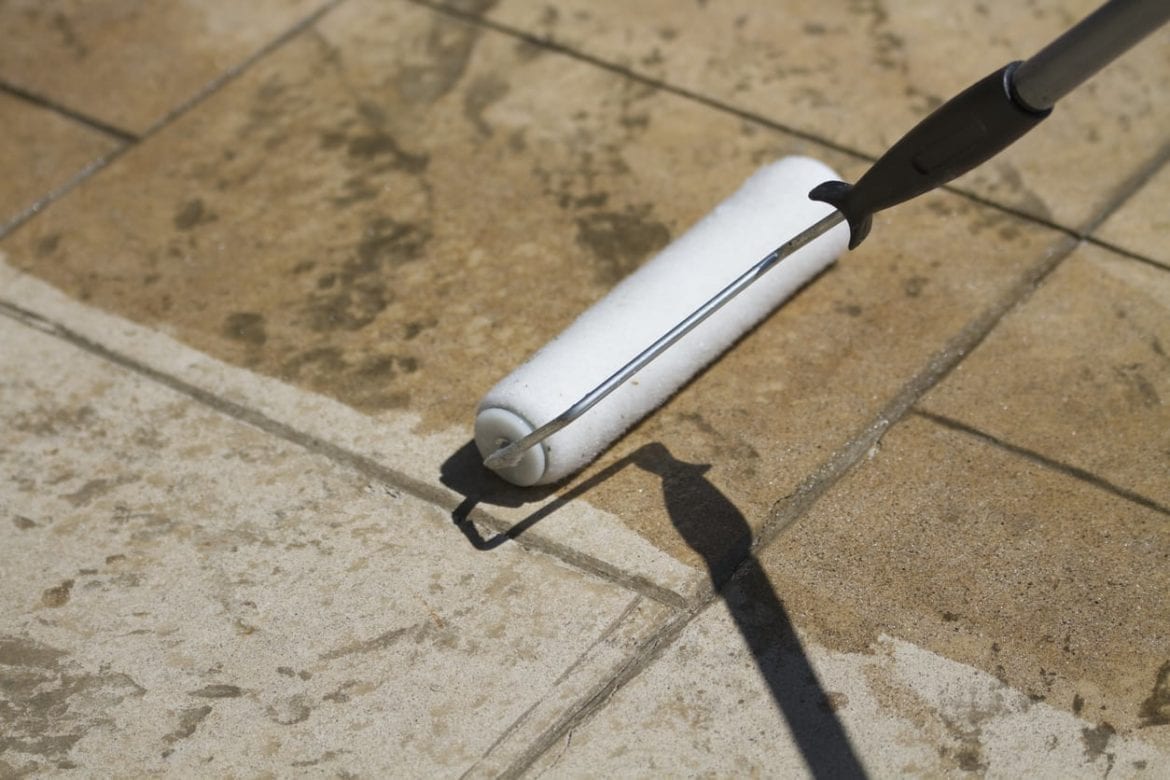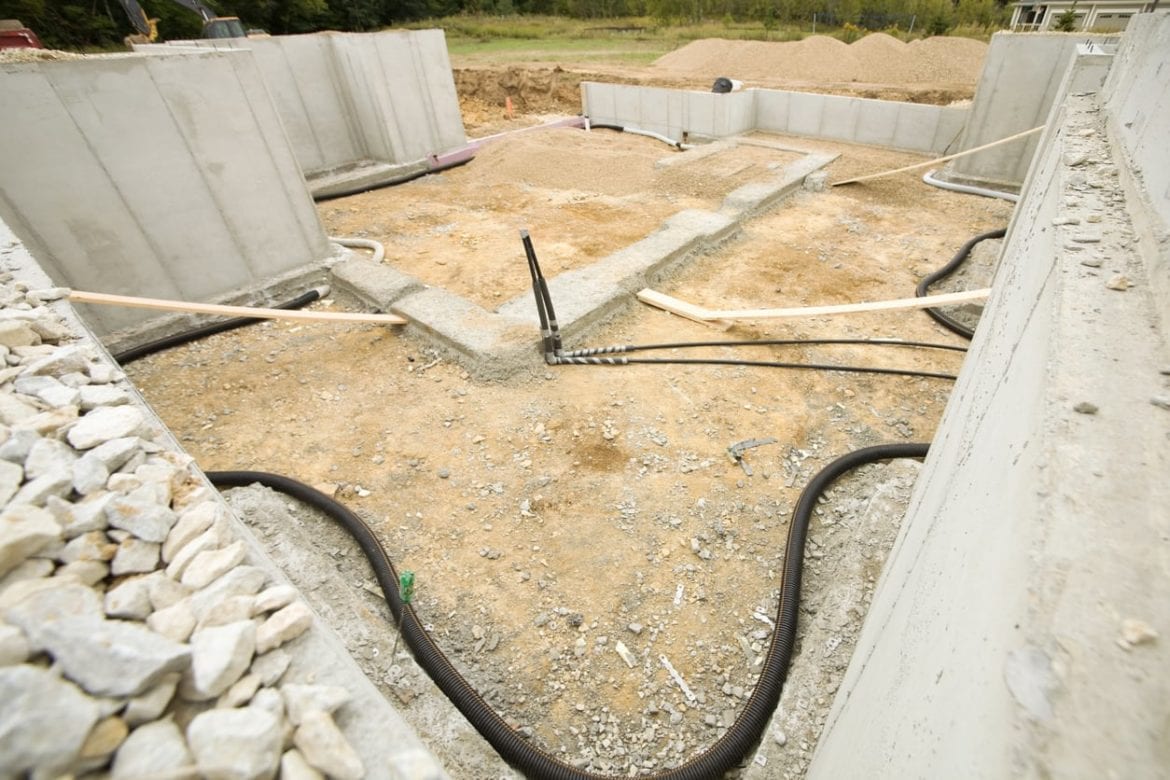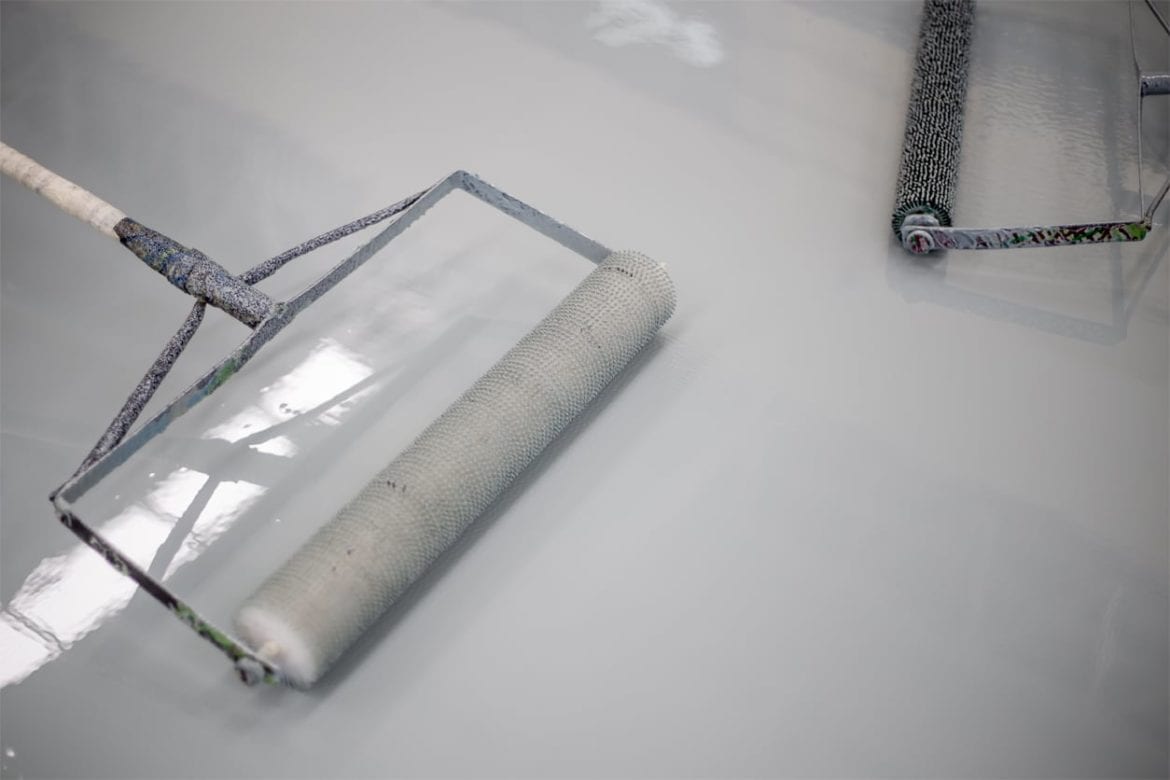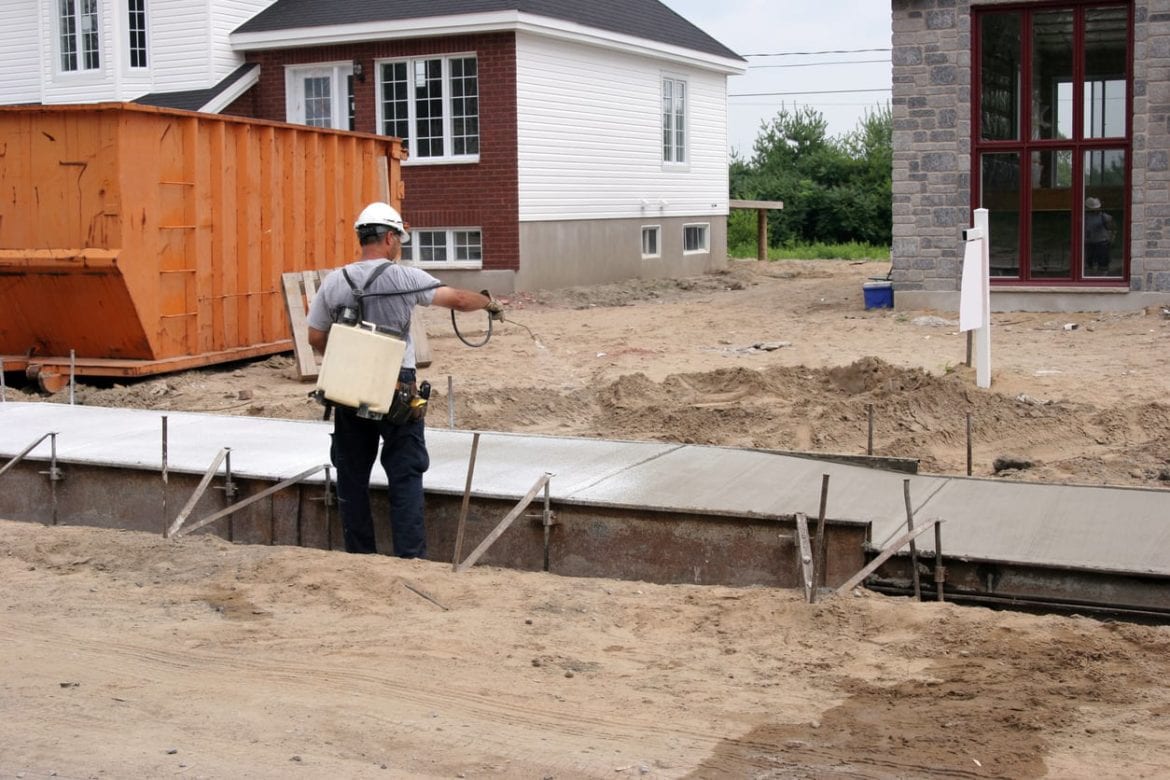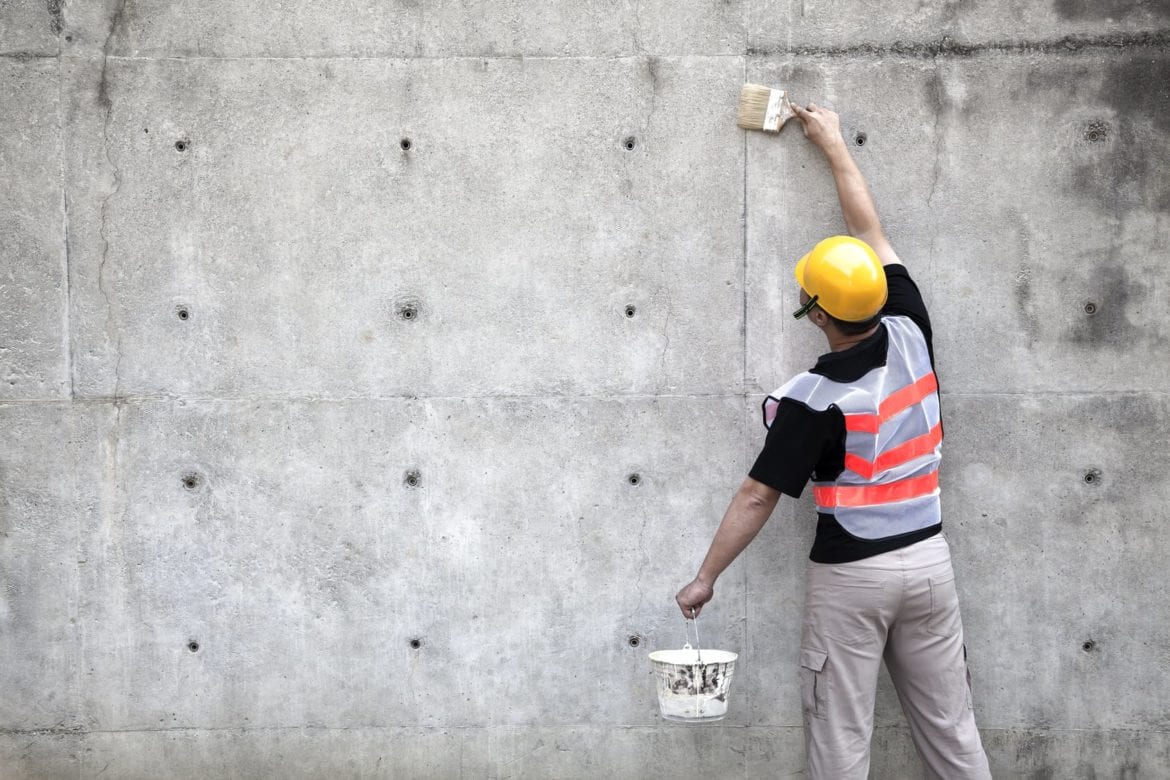If you live in an area with a warmer climate, such as in the West or the South, then there is a strong possibility that your driveway will be made from concrete. Concrete driveways also appear in colder climates, though asphalt tends to be the preferred method of construction, as it holds up to colder seasons better than traditional concrete.
Either way, wherever your home is located, having a concrete driveway means you are at risk for the various problems that can plague exterior concrete. Concrete, while strong and long-lasting, can suffer from cracking, spalling, crumbling, and a general degradation over time with prolonged exposure to the elements. As concrete is dotted with tiny pores all across its surface, these pores can allow water, salts, and other debris to enter to the concrete’s microscopic network of pores and hairline cracks. The incursion of water, salts, and such can be disastrous for the concrete driveway, as the concrete can degrade over time from within.
Fortunately, there is an easy solution to prevent the degradation of your concrete driveway. Whether you live in a warmer or colder climate, you will want to use an acrylic sealer on your delicate pavered driveway. Pavers are a type of concrete with larger pores that is, accordingly, more porous. The increased porosity of the concrete makes penetrating sealers a bad option for protecting the surface from degradation. Therefore, the best option remaining is a surface sealer, like an acrylic.
You will likely want to choose an acrylic sealer that is a water-based solution, as these are easier to apply while also being safer for yourself, your family, and the environment. These sealers are full of large particles of acrylic sealant that pool on the surface of the concrete driveway to be spread out evenly over the course of the application. Once spread out properly, the sealer will provide comprehensive surface-level protection.
Our Take: The top acrylic sealers for exterior driveways are Cryli-Tek 5505 and Everclear
While water damage is an obvious potential damage a home or building owner has to worry about when it comes to concrete, there are other potentially harmful things that you may not even notice. The passage of radon, a gas linked to cancer, through your concrete into your home or building is one of these. Concrete, by its very nature, has a large amount of tiny pores and hairlines cracks that extend throughout it. Beginning at the surface, these pores can allow gases like methane and radon to pass through your concrete with little problem.
While concrete as a structural material often makes it the only choice for construction, regardless of drawbacks like the passage of radon, you can easily defend your home or building from this potentially carcinogenic gas. Radon is a colorless, tasteless, and odorless gas that is actually the second greatest cause of lung cancer, after smoking, according to the U.S. Environmental Protection Agency. In order to know if radon is afflicting your home or building, you need to get a radon test kit and follow the instructions. As the gas cannot be tasted or smelled, these test kits are really the only way to know if radon is plaguing your home.
If you have radon in your home, a possible cause could be that it is coming through the concrete. Therefore, the solution to this problem would be to use a quality concrete sealer specifically designed to block out radon, methane, and similar harmful gases. A surface sealer is not a great choice, as it would not comprehensively block out the gas. The best choice for a concrete sealer is a silicate sealer. Silicate sealers are part of the class of penetrating sealers, coming in sodium or lithium forms. The particles of silicate in the sealer will penetrate past the surface pores of the concrete into the material. Once here, they will react with various minerals already present within the concrete to chemically produce more calcium silicate hydrate (CSH). The production of CSH will block the pores and cracks through which radon and similar gases can travel, helping ensure your home remains adequately protected.
Our Take: A radon reducing sealer that can be used is Radonseal.
Polyaspartic sealers are a relatively new phenomenon that are increasingly becoming more popular as part of epoxy floor systems. However, they are also standalone products that may be the perfect choice for your particular concrete project. While acrylic sealers are great for decorative concrete and penetrating sealers are perfect for surfaces like basement floors that need deep protection, polyaspartics are slightly different.
Polyaspartic sealers are a surface level sealer, like acrylics and epoxies. Rather than penetrate into the concrete, they will remain on the surface to be applied comprehensively to cover the concrete surfaces they are meant to protect. They tend to be solvent-based, rather than water-based, providing thorough and lasting protection.
Polyaspartics are technically a type of urethane sealers. Urethanes, such as aliphatic urethanes, tend to be one- or two-component polymers that have varying solids contents. This means they are a perfect choice for floors and other concrete surfaces with high traffic and risk of abrasions, scratches, and spills. Polyaspartics feature excellent hardness and abrasion resistance, all while repelling chemical and moisture stains.
Polyaspartics are fast becoming recognized as a miracle material. They demonstrate excellent flexibility, able to bridge small cracks and protect already cracked surfaces. Similarly, they can be applied at almost any temperature, always featuring incredible bond strength to the concrete substrate. They are long-lasting, clear, and they can easily be applied over an epoxy basecoat or a number of epoxy basecoats.
The best quality polyaspartics possess, however, is its incredibly fast tack-free dry time. Drying in as little as one hour, depending on the particular conditions of each project, polyaspartics are the best choice for retail stores, industrial warehouses, business parks, and other places whose concrete is in need of help. Simply apply the polyaspartic coating overnight, and the floor will be dry and ready to use by the morning. The high level of protection afforded by polyaspartics, in conjunction with their exceptionally fast dry time, make them an ideal choice for many concrete sealing situations.
Our Take: One of the best polyaspartics is Polyaspartic 745 with a super fast dry time of 1-3 hours
Cure and seal products are a great way to protect and cure a new slab of concrete. While concrete is known to be strong and durable, nigh indestructible, it does not just appear that way. Instead, it goes through a long and delicate process of mixing and curing that gives it its strength. If you see cracked, crumbling concrete, it is likely that the concrete has actually been poorly mixed and cured. The easiest way to avoid this is to make sure your concrete cures properly.
Concrete is mixed with Portland cement, water, and some sort of aggregate, like gravel or sand. Once mixed, it is poured and spread out, according to the project’s needs. However, after it has been poured, the concrete needs to cure for the proper amount of time. The key to curing is to maintain a consistence level of moisture and temperature, which helps the concrete gain most of its potential strength. Without a proper curing process, the concrete will never be as strong as it could be, and it will manifest problems later in its life.
A cure and seal is a product that provides a membrane over the top of freshly poured concrete. This membrane helps retain the proper amount of moisture while keeping the concrete at an adequate temperature for the curing process to be at its most effective. While the curing process is traditional done with burlap sacks or tarps and a consistent stream of water, cure and seal products are relative newcomers to the stage.
The biggest advantage to cure and seal products is that they provide a layer of protection for your concrete above and beyond what a traditional curing process will give. Typically, once the concrete is cured after the thirty-day period, it is ready to be used, though it is not protected from stains and negative effects of weathering. However, concrete treated with a cure and seal process is cured and sealed, just as the name implies. That means that the concrete actually comes into the world sealed, protected from potential disasters in the early stages of its life. While the seal will have to be renewed some years later, depending on the cure and seal product used, as well as a variety of other factors, the concrete will be able to repel stains and increase its longevity at crucial stages in its existence.
Our Take: Some excellent cure and seal sealers include Iso-Cure C309
One of the most compelling reasons to use a concrete sealer is to help improve the aesthetics features of the slab, pavers, bricks or stone. Decorative concrete has become extremely popular and can be seen used in driveways and patios, interior and exterior floors, steps and walkways, pools and more. Now what is the best method of protecting all of these surfaces?
An acrylic concrete sealer would be you best option. Acrylic sealers come in water-based versions and solvent based versions. The biggest difference between the two is the VOC content, sheen and life of the product; meaning how often it lasts before needing to be reapplied. Solvent based acrylics tend to have higher VOC’s and solvent odors; however, they leave a higher gloss shine and last a few years longer than water based versions. Solvent-based sealers tend to be the strongest options when you are sealing an exterior substrate, or patio. When applying an acrylic sealer outdoors make sure that the manufacturer states their product is UV stable. If an acrylic is not UV stable and is used outdoors there are high risks of yellowing, peeling and flaking from the sun’s strong, harmful rays. Although solvent based sealers are great for exterior, decorative concrete be aware that they can make surfaces extremely slippery. They may add a beautiful high gloss finish, but if applied to a pool deck they could cause excessive slipperiness. Some manufacturers offer additives (to be used in conjunction with the sealer at the time of application) that help make the surface less slippery.
If you do not want a slippery high gloss surface you should consider a water based concrete sealer. They may need to be re-applied more frequently but they usually meet all VOC regulations and will offer a softer matte or satin sheen. Water based acrylic sealers usually last 1-3 years before needing to be re-applied compared to 2-5 years you would get from a solvent based concrete sealer.
Acrylic concrete sealers are one of the most common concrete sealers on the market today. Just be sure when you are shopping around that the sealer is a pure acrylic and not a blend of an acrylic and something else. Acrylic sealers are great for stamped decorative concrete patios, driveways and pavers and really do beautify and enhance concrete’s aesthetic appearance.
Our Take: We like Cryli-Tek 5505 with a nice wet-look that is non-yellowing and long lasting.
What are the best silicate concrete sealers?
When you’ve decided on a penetrating concrete sealer, maybe for a project like a garage, a driveway, or a basement made of traditional concrete, you no longer have to consider surface sealers like acrylics, urethanes, and epoxies. However, there are a few different choices at the level of penetrating sealers.
Silicate sealers are the a common choice for densification. They are a high quality, dependable choice of penetrating sealer. They are made up of small particles of silicate, a material that will penetrate past the surface pores of the concrete to react chemically within the concrete to create CSH. CSH, or calcium silicate hydrate, is a naturally occurring mineral within the concrete that provides its strength. However, concrete is naturally porous with a large number of air pockets. With a penetrating sealer delivering silicate into the concrete, the silicate will react chemically with the calcium, free lime, and various alkalis within the concrete to create more CSH, which increases the concrete’s strength.
A silicate sealer is made up of silicate suspended in a type of carrier, typically a sodium. That is why you see sodium silicate sealers everywhere on the market. These are excellent choices, but a newcomer to the field is the lithium silicate sealer. The difference is that the carrier, which only functions to transport the silicate into the concrete, is lithium instead of sodium. Keep in mind that silicates both sodium and lithium do not offer any type of waterproofing protection.
Our Take: Silicate densifiers we like are Lithi-Tek 4500 and The Ashford Formula.

